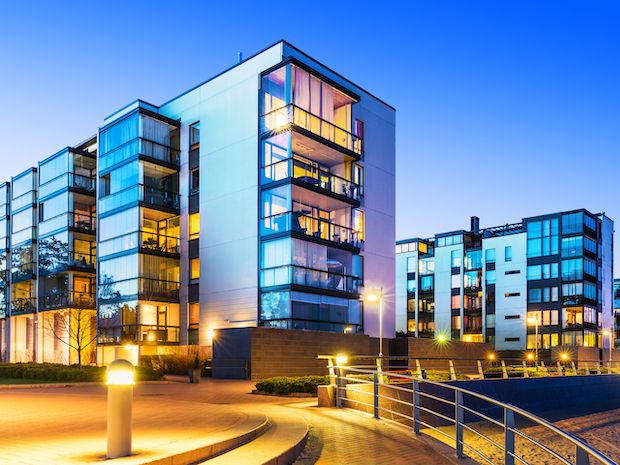Sarmaya Capital combines tried and true investment model with revolutionary twist
May 8, 2019

As featured on BNN Bloomberg and Financial Post:
Real estate investment firm acquires inherently undervalued assets with strong growth potential
- Year-over-year growth within U.S multi-family real estate continues as demographic trends favour rental housing
- Sarmaya’s aim is to better the lives of the communities in which it invests, while simultaneously differentiating the company’s investments within the marketplace
- The Sarmaya Real Estate Fund will focus on assets that cater to renters in the ‘by necessity’ category
It may not have the cachet of cannabis stocks or the sizzle of a disruptive technology like carbon-lithium batteries, but for years now, the U.S. multi-family real estate sector has been a strong, robust space ideal for prudent investors who desire long-term returns.
As other sectors in the U.S. housing market grow antsy with interest rate uncertainty, the latest Yardi Matrix illustrates how the multi-family space, particularly the “renters by necessity” niche, has grown significantly, largely due to consistent job growth and rising wages. The report, which surveyed 127 major U.S. real estate markets, found that average multi-family rents grew by 3.6 per cent in February, the highest increase since late 2016. With a healthy economy, more than 200,000 jobs were added per month in 2018, and consumers are showing more financial confidence as a result.
So, how does a Canadian investor get in on the ground floor of the U.S. multi-family market? There are numerous real estate funds using standard investment portfolio models. But, how does one choose a portfolio model that has some buzz around it and still provides long-term returns?
"Just because you're renting by necessity doesn't mean you shouldn't have a beautiful, safe, attractive place to live. Why not make their places better places to live and in so doing, increase the value of your own investment?"
Alex Yamini, president and CEO, Sarmaya Capital Corp.
Sarmaya Capital believes that investors want to “do well while doing good”
Alex Yamini, president and CEO of Sarmaya Capital Corp., believes that he and his team have come up with a model that will revolutionize the real estate investment and residential tenant experience simultaneously. He envisions building better communities as well as generating great returns on the company’s investments.
“If you feel happy about coming home and you’re invested in where you live, you’re going to cherish it. You’re not going to disrespect it or let other people do the same,” says Yamini.
Unique in the multi-family investment space, Sarmaya Capital has an upfront, built-in community betterment component. Instead of waiting for returns to reach a certain level before improving a property, a fixed percentage of the rehabilitation budget goes straight into their “Community Betterment” program. Renters see the benefits immediately, not down the line.
“Just because you’re renting by necessity doesn’t mean you shouldn’t have a beautiful, safe, attractive place to live. Why not make their places better places to live and in so doing, increase the value of your own investment?” Yamini says building better communities isn’t just a feel-good, socially-responsible thing to do — it’s simply good business.
“Putting the altruism and the feel-good factor aside, we understand that if you build an asset in which its users are more engaged, feel more ownership of and feel prouder about, the intrinsic value of that asset increases,” says Yamini. “So, just on a purely self-interested level for our investors, the value of that output increases.”
Investors get returns even if they pull their capital out
When Yamini and company launch their first Sarmaya Real Estate Fund this year, investors will get a unique advantage. They can maintain their ownership position in the properties in perpetuity if the assets remain within the fund — even if they choose to take their capital out.
Moreover, the vision for the Sarmaya Real Estate fund is primarily rooted in the belief that the U.S. multi-family sector is strong, robust and well-situated to provide long-term returns. This belief is further bolstered by the type and class of multi-family assets in which the Sarmaya Real Estate fund wishes to invest.
“Investors will always maintain their equity position. So, let’s say you put money into one of these projects and you end up with 10 per cent in a certain building. Even after you’ve taken your last penny out, you still own 10 per cent,” says Yamini. “I think that will be the biggest differentiating factor. We want the people who invest with us from the beginning to stay with us forever.”
The company has done its homework
Yamini and his team have spent years researching the market and developing a proprietary in-house analysis model. The Sarmaya Analysis Model — SAM — allows the company to simply plug in any property in the U.S. and see if it meets their profile. They also took their time to build a brand in advance of launching; Yamini says that was a deliberate decision.
“It’s very tempting to get started and put the cart before the horse. We built the company with our own capital and with some seed investors. Once we start asking for money from the public, that money is going directly to building the portfolio — not building the business plan and the software and the marketing materials,” says Yamini.
Another refreshing wrinkle? If the fund’s not doing well, investors aren’t going to get zapped with the usual fees. The fee structure is aligned with the success of the fund. It’s a fixed ratio as opposed to a fixed dollar fee, so if the fund underperforms, investors aren’t stuck paying the same fees.
Older rental properties are “recession proof”
Another factor in Sarmaya Capital’s carefully thought out game plan is the approach they take to adding properties to their portfolio. Not only do they focus on major, growing cities such as Atlanta and others in the Southern United States, but they also prioritize acquiring assets that are intrinsically undervalued, have above-average growth potential and provide provable cash flow and returns for investors.

The kinds of properties in which Sarmaya will invest are flourishing in major cities like Atlanta
This model will be achieved through rehabilitation, renovation, community betterment and refinancing. “The type of assets that we’re targeting are very specifically recession proof in a sense that they are B and C buildings,” says Yamini.
“No matter if the Dow is at 24,000 or at 12,000, no matter if the economy is in a recession or booming, these types of buildings will always be occupied.”
Creating a brand that works for investors and tenants
Sarmaya Capital has positioned itself to be at the forefront of activist investment and to change the landscape of residential real estate. The company’s goal is to better the lives of the communities in which it invests, but also distinguish its unique framework within the marketplace. This revolutionary approach will help the company produce added returns for its investors upon refinancing, sale or valuation of its investments.
In doing so, Yamini hopes the company will live up to its motto of “doing well while doing good,” he says.
“The investors will have a conscious appreciation that with every dollar they’ve gotten back, in return they’ve helped thousands of people live better and that’s the really powerful concept — that’s the really rare part. That’s what gets me the most excited.”


